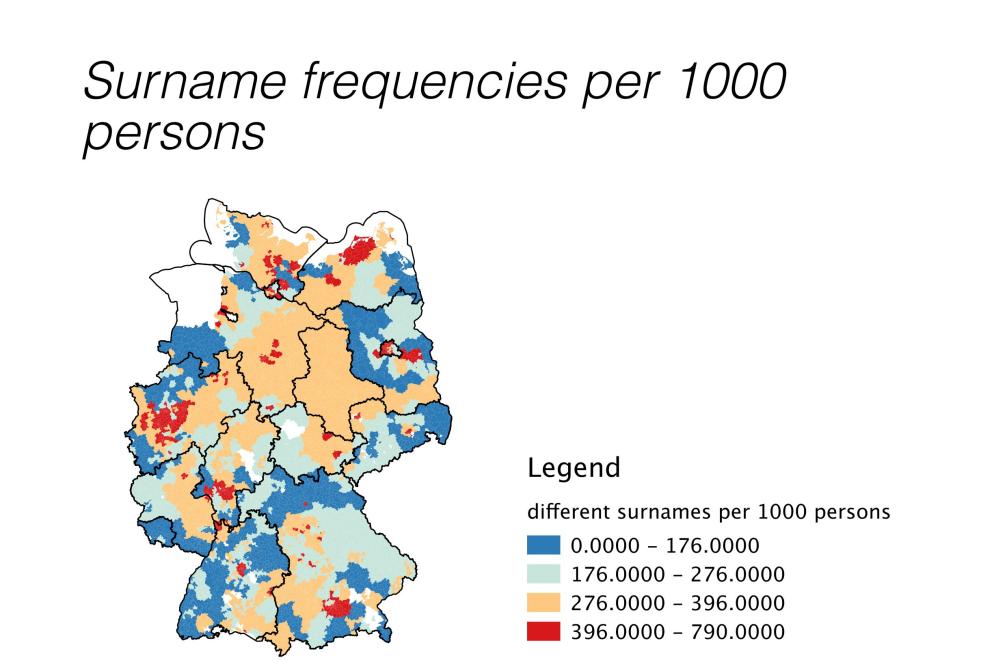I always wanted to make this map.
While it is evident from an onomastic point of view that surnames offer various patterns of regional distribution, e.g., due to migration, linguistic structure, genealogical reasons, it seems less clear – at least to me – whether there exist also regional patters for the amount of different surnames. Are there regions with a larger or smaller inventory of surnames compared to others? It seems evident of course that the melting pots of big cities would show larger inventories due to their history of migration. But is it always true that the more people live at a specific location, the more different surnames we get?
In order to get some grip on this question for the German surname landscape, I calculated first the absolute number of different surnames for all three-digit postal code areas in Germany. The data basis consists of the 23.526.460 registered people in the German telephone book of 2009. The count for different surnames in a certain postal code area then is correlated with the total number of persons registered for this area. In order to account for the varying people count of these regions – a postal code area of Berlin certainly has higher counts than a more rural one – it was decided to calculate the number of different surnames per 1000 persons.
The resulting map (made with QGIS) firstly shows that German regions indeed differ with respect to the number of different surnames. The mean is approximately 270 different names per 1000 persons and we can clearly identify regions containing more respectively less names. Unsurprisingly, it is confirmed that big cities and urban agglomerates are characterised by having more different surnames. Note the red areas on the map, indicating heavily urbanised regions like, e.g. Munich, Stuttgart, Frankfurt, the Ruhrgebiet, Hamburg, Berlin etc. A high degree of urbanity also correlates with more diverse surname inventories. Nevertheless, we also find more rural areas, e.g. in the northeast, also exhibiting a large inventory of surnames and the reasons for this remain to be investigated. Light blue areas, on the other hand, indicate areas with a very low surname diversity and again it remains to be investigated why certain areas in Bavaria, Brandenburg or in the Eifel seem to have developed less surnames than other regions. It would be interesting correlating these figures with some kind of ‘rurality index’.
